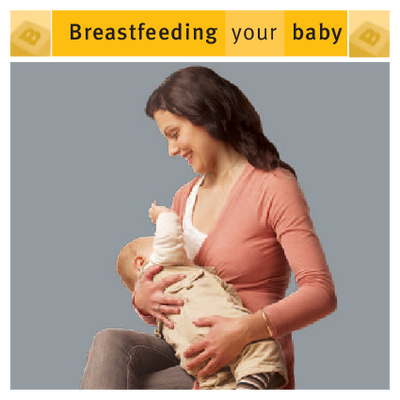Breastfeeding Your Baby – English version - HE2098

Clear, simple suggestions in English cover the nursing relationship, why breast milk is a baby’s best food, different ways to hold the baby during breastfeeding, how to ensure the baby is on the breast in the best way, frequency of feeds, breast care and further help.
The full resource:
Breastfeeding is an ongoing relationship between you and your baby
- breastfeeding starts soon after your baby is born
- it can take time for you and your baby to learn how to breastfeed
- with the right help almost all mothers can breastfeed
Breast milk is the perfect food for your baby
- it’s all your baby needs to eat and drink for about the first six months
- it helps protect your baby against colds, tummy-bugs, infections and allergies
- it helps your baby feel safe and secure
Breastfeeding is best for you too
- it’s free
- it saves you time
- it gives you a chance to rest while you are feeding your baby
- it helps you feel close to your baby
- it may reduce your risk of some cancers and bone disease
There are different ways you can hold your baby to breastfeed – find one that is comfortable for you
- lie your baby on its side with its body facing you
- support your baby’s back with your arm
- hold your baby close to your body




Bring your baby to your breast – not your breast to your baby
- Make sure that
- baby’s mouth is WIDE open
- baby’s tongue is forward and right down
- baby’s chin touches your breast
- Bring your baby to your breast quickly


When your baby is on your breast the right way
- your baby has a big mouthful of breast
- your baby’s chin is CLOSE in against your breast
- if you listen, you will hear your baby swallow
- it may feel a bit sore at the start of a feed but this should ease off
Breastfeeding should feel good
- if it doesn't – start again – slip your finger in the side of your baby’s mouth to break the seal
- letting your baby suck the wrong way can cause problems
- if you feel pain in your nipples or breasts – get help quickly
When does my baby need to feed?
- Your baby will show you signs early
- starting to wake
- moving head
- opening and closing mouth, licking
- putting thumb or fingers in mouth
- crying is a late sign
- for new babies – 8 to 12 times every 24 hours
- new babies need feeding during the night
- some days your baby will need more feeds
- you are not likely to run out of milk – if you feed your baby more, your breasts will make more milk


You can still breastfeed...
- when you go out with your baby
- if you need to go out without your baby – talk to someone about how to express your breast milk
- if you go back to work (read the pamphlet “Breastfeeding and Working”)
- as your baby gets older – breastfeeding is good for babies until they are at least two years of age or beyond
Getting support
Ask family and friends for help
- your partner and/or other family members can help with baby – cuddling, playing, changing nappies, giving baby a bath
- they can also help with washing, cooking, shopping and looking after older children
Need help breastfeeding?
Get help early
These places give help and information about breastfeeding. Most of the numbers can be found online.
- Your midwife or other lead maternity carer (LMC)
- Your local Well Child/Tamariki Ora nurse
- Plunket
- Your local Plunket nurse
- Family Centres
- La Leche League – give breastfeeding information and run breastfeeding support groups
- A lactation consultant – hospital-based or private. Phone your local maternity hospital to find the name of one
- A breastfeeding clinic near you
For help and information please call the Well Child Telephone Advice Service on 0800 611 116 or PlunketLine on 0800 933 922
If the advice isn’t working or you’re not happy with it – get a second opinion
Thanks to the mothers, fathers and babies and to Waitemata Health. Adapted with permission from “You can breastfeed your baby” 1998: Commonwealth of Australia copyright.
ISBN: 978-0-478-41129-4 (print)
ISBN 978-0-478-41130-0 (online)